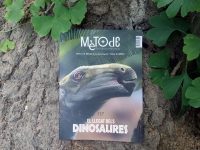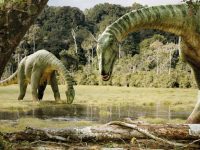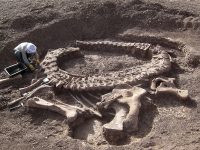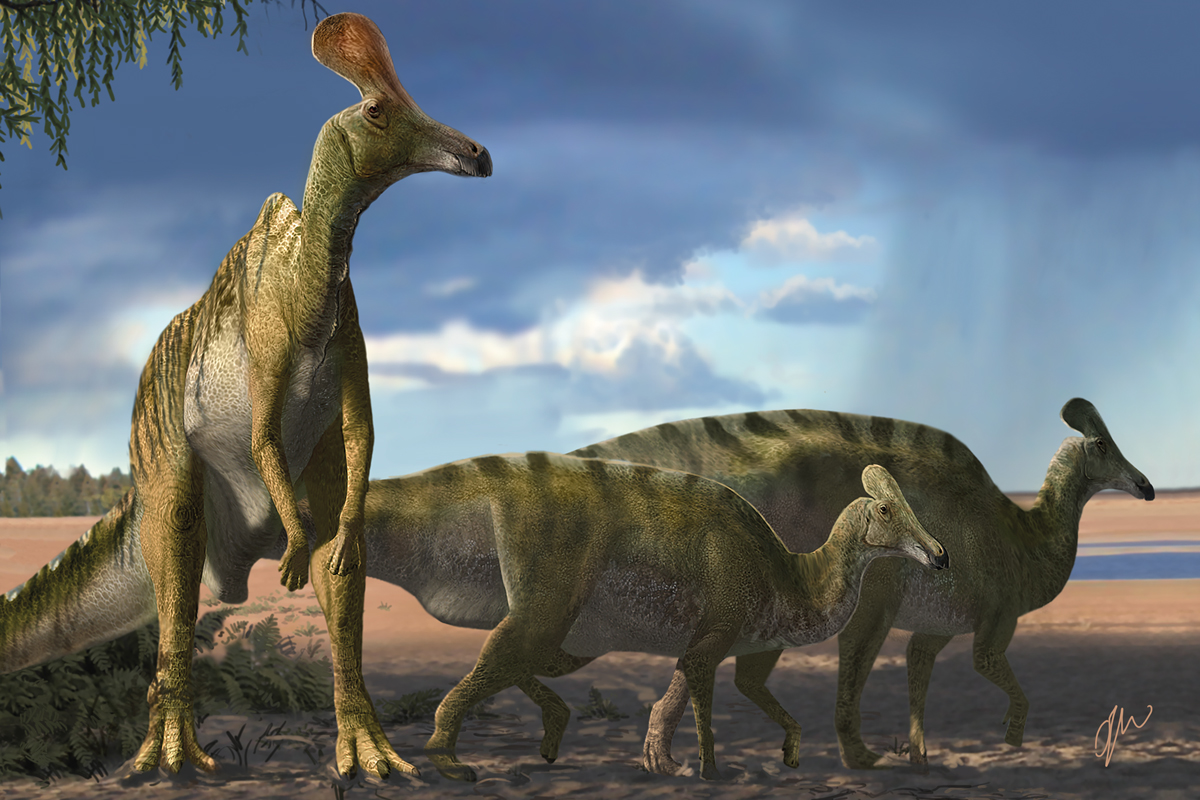
«Children find them exciting» is an unoriginal comment that those involved in dinosaur research have often heard. Popular appreciation of these animals dates almost as far back as their scientific discovery in the mid-19th century, and for much of the time since then, dinosaurs have been popularly regarded as entertainment. In recent decades, however, society has become more aware of the geological and biological aspects, rather than the recreational ones. Why are there so many sites in certain regions and none in other nearby areas? Which were the largest, and why did they reach such gigantic proportions? How do we know what colour they were? We hear these questions every day in lecture halls full of people eager to learn more about the mysteries of palaeontology.
Large-scale audiovisual productions and the many museums that have included dinosaurs in their exhibitions – or even based them entirely on dinosaurs (Figure 1) – have fed the curiosity of many types of audiences; this has served not only to increase the scientific culture of the public, but also to multiply the number of experts in dinosaurology, to encourage new discoveries, and to promote surprising studies of these fascinating creatures.
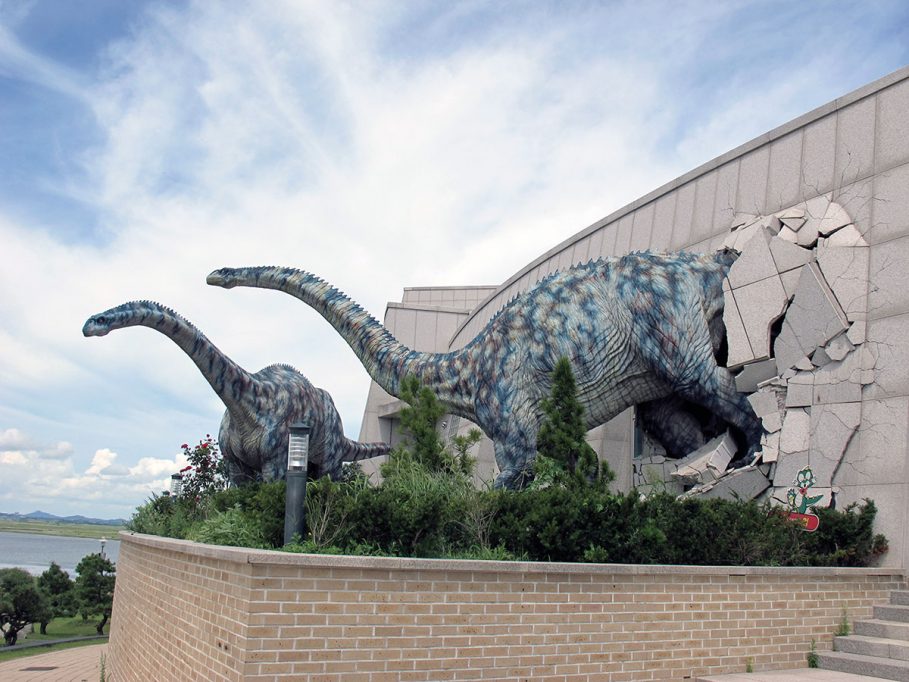
Figure 1. The Haenam Uhangri Dinosaur Museum in South Korea is one of many museums dedicated to dinosaurs. Together with major audiovisual productions, these sites enhance the scientific culture of the public and multiply the number of professionals dedicated to dinosaurology./ Photo: Luis Alcalá
For a long time, dinosaur research was limited to describing new discoveries and incorporating them into a nascent – and increasingly comprehensive – classification system. Let us not forget that at the beginning of the 19th century we knew nothing about these «terrible lizards» and no one had yet pronounced the word «dinosaur». Today, new species are being described all the time, and while this work of documenting dinodiversity is as useful as it is essential, the scope of studies has expanded dramatically, making dinosaurology a veritable compendium of disciplines.
Fossils can be used to make conclusions about biomechanics, life history, reproduction, feeding, size, behaviour (hunting/scavenging, sociality, parental care, etc.) and other aspects, and the information obtained contributes to advances in knowledge of sedimentary environments, taphonomy, palaeobiogeography, palaeoecology, palaeoclimatology or evolutionary aspects, among others. And, as has already been said, they are a fundamental attraction for increasing the scientific culture of society through their role in the various facets of the world of entertainment, with numerous products aimed at all kinds of audiences. More importantly, their appeal to young people makes them a compelling gateway to the scientific method, as evidenced by the fact that many people without a background in palaeontology or biology can properly identify the binomial nomenclature for the tyrannosaur. This may lead to a future career in research, or simply to an appreciation of science in its broadest sense, with all the benefits that this brings to improving the quality of life in a well-informed society.
Among dinosaur fossils
This monograph reviews the aforementioned variety of contributions, including texts on the documentation of dinosaur diversity, calculations of the size of the animals with the largest preserved bones, the use of specific technologies to decipher previously inaccessible anatomical aspects, and the use of dinosaurs for the benefit of scientific dissemination and the socio-economic development of local communities around sites. These are just a few examples of the current diversification of dinosaur studies, which continues to generate new scientific interest and allows for a comprehensive reconstruction of the dinosaur lineage, as well as the ecosystems they inhabited.
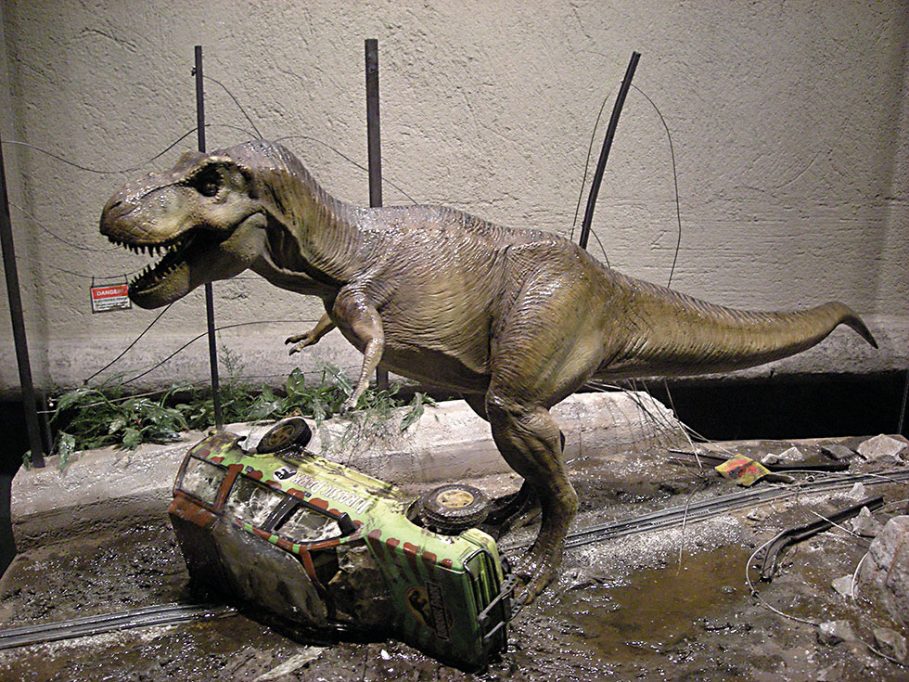
Figure 2. Diorama depicting a scene from Jurassic Park, on display at the Italian National Museum of Cinema (Turin). The film saga encouraged a generation of palaeontologists, facilitated the creation of museums and research groups, and promoted the funding of palaeontological campaigns./ Photo: Luis Alcalá
The scientific output on dinosaurs is staggering, not to mention other outreach publications and online products, both professional and amateur. The pace of discovery is relentless, perhaps largely thanks to the Jurassic Park film saga (Figure 2), which has filled universities with palaeontology enthusiasts, facilitated the creation of museums and dinosaur research groups, and increased the willingness of sponsors – both public and private – to fund palaeontological campaigns. For some time now, new dinosaur taxa have been described on a weekly basis and, less well known but no less evident, progress has been made in various facets of research, from very general questions – such as size (Figures 3 and 4) – to specific debates on very particular aspects of some of them, such as the current case regarding the extent of the aquatic habitats of Spinosaurus, or the exploration of frontier questions such as colour or brain structure (Figure 5), which were completely inaccessible not so long ago.
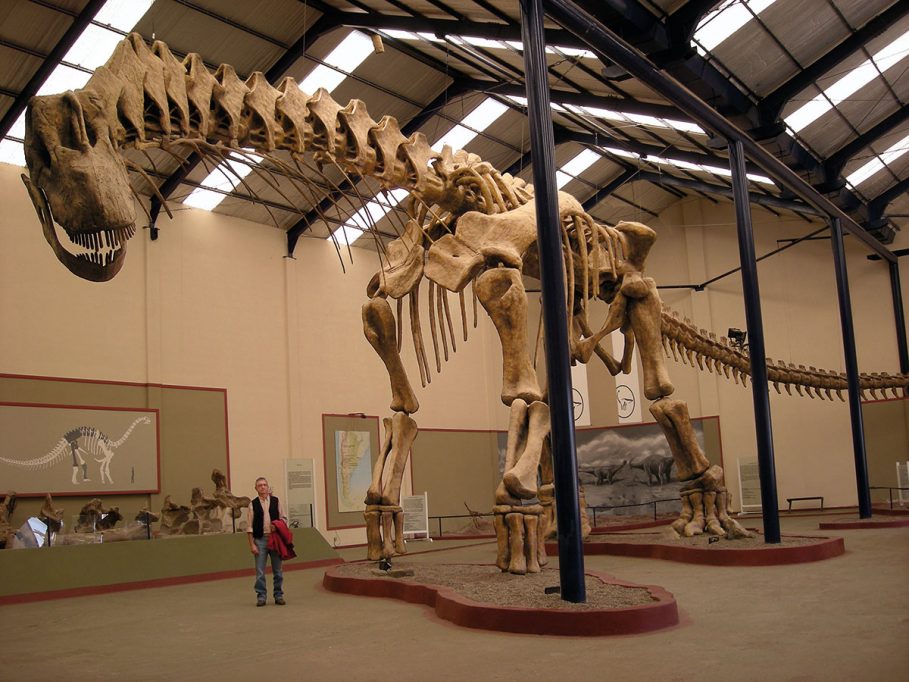
Figure 3. Reconstruction of the skeleton of Argentinosaurus huinculensis in the Carmen Funes Municipal Museum of Plaza Huincul (Argentina)./ Photo: M. Teresa Fonte
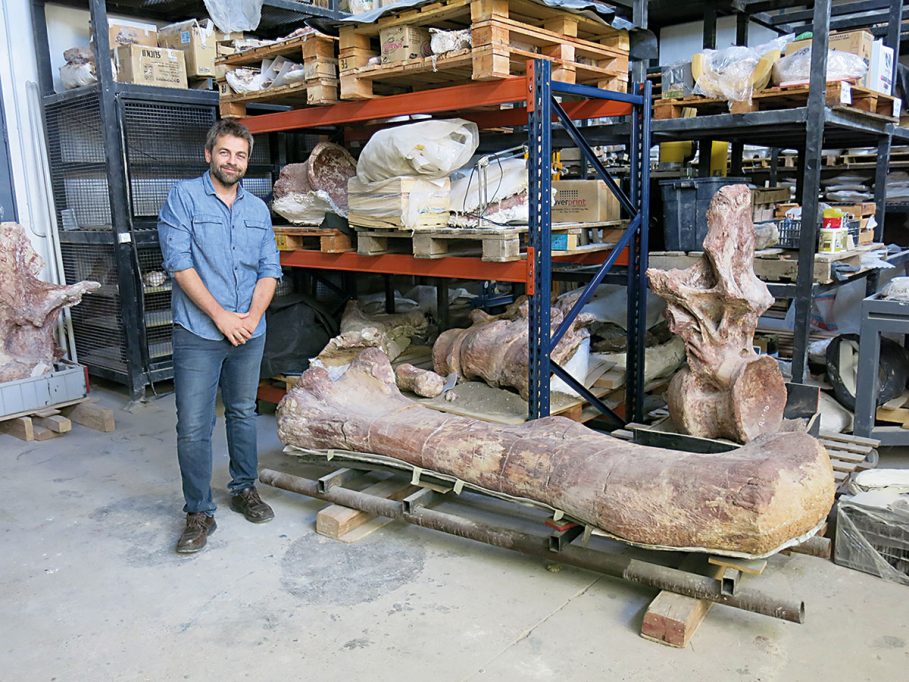
Figure 4. Palaeontologist Diego Pol with the femur of the holotype of Patagotitan mayorum at the Egidio Feruglio Museum, Trelew (Argentina)./ Photo: Luis Alcalá
Our knowledge of dinosaurs, which began in the second half of the 19th century with the reconstruction of their skeletons (based on the first fossils found, which were not always correct because these animals were previously unknown), has expanded over time with advances in the anatomical interpretation of living animals, the ecosystems in which they coexisted with other creatures, and even their behaviour. In the first half of the 20th century, they were often considered to be ridiculous animals, as reflected in an article published exactly 70 years ago in the Spanish newspaper Lucha entitled «How the monsters of prehistory disappeared. The diplodocuses, which were stupid animals, died of starvation». But from the 1960s onwards, a radical change took place in what is now known as the Dinosaur Renaissance. New methods, such as histological studies that reconsidered their physiology, confirmed that they were as active as modern mammals and birds. Indirect fossils, especially ichnites and eggs, helped to outline aspects of their social behaviour. Since then, their image as agile animals with dynamic postures and actions has spread and become popular, and their phylogenetic relationships and degree of kinship with other vertebrates have become clearer. Although Archaeopteryx had been known for a long time (Figure 6), new approaches to dinosaur studies and the explosion of spectacular feathered dinosaur discoveries – mainly from China – led to the realisation that birds were really just another group of maniraptoran theropod dinosaurs. So the dinosaurs did not go extinct 66 million years ago, at the boundary between the Late Cretaceous and the Palaeocene, nor were they wiped out by a meteorite strike or a series of sudden events. Far from dying in a devastating catastrophe, the most popular dinosaurs in our iconography have survived through a formidable legacy: the birds with which we now share our lives, and which populate the planet with many more species than the mammalian group to which we belong.
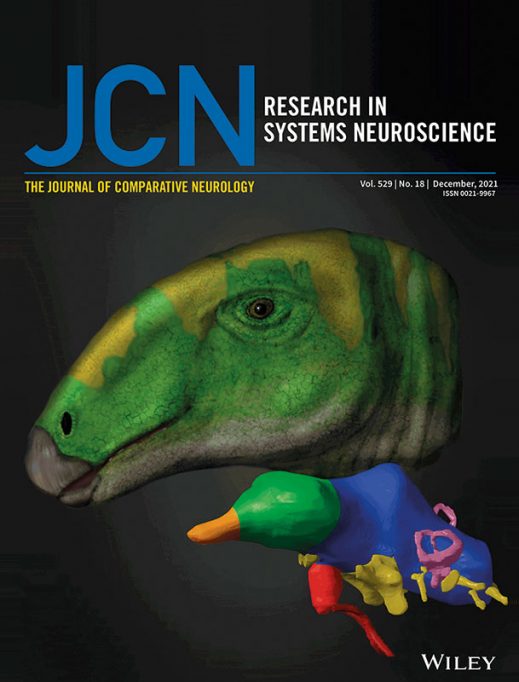
Figure 5. Dinosaur palaeoneurology is one of the specialist fields that has begun to develop thanks to the application of advanced technologies. Shown is the cover of volume 529 (2021) of The Journal of Comparative Neurology.
From local sites to universal knowledge
The contributions to this volume follow the logical sequence of research, starting with local discoveries, documentation, and inventory of sites, and then the systematics and taxonomy of dinosaurs (Andrés Santos Cubedo); this work is necessary in order to propose evolutionary or palaeobiogeographical hypotheses based on a large amount of data from all over the world. After this essential stage, there are other research projects that try to transform fossil material into real «living beings», represented here by two examples: one on the reliable reconstruction of their appearance, as seen in Jorge O. Calvo’s text on determining the dimensions of an animal from its bones (an example of the crossroads between science and popular curiosity) and in Daniel Vidal’s text on functional keys of their anatomy. Let us not forget that curiosity is always the basis of scientific questions. There is also a document on what all this wealth of knowledge contributes to local development, encouraging new discoveries that fortunately feed the cycle described here (Alberto Cobos Periáñez). All of this is accompanied by Óscar Sanisidro’s illustrations, which reconcile scientific knowledge and popular interest, and are useful for both scientific documentation and outreach activities.
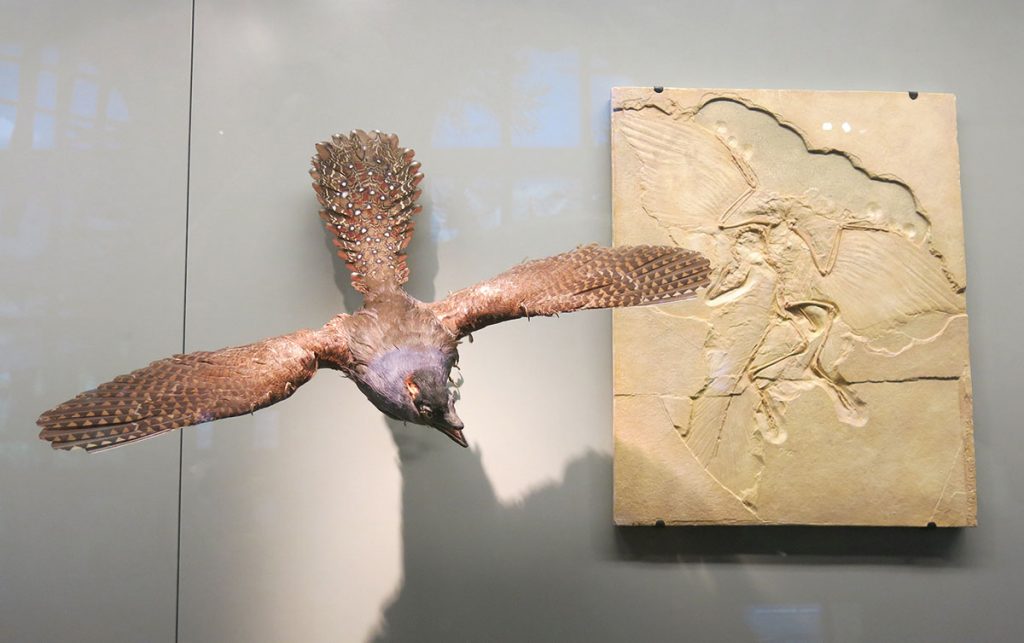
Figure 6. Replica of one of the fossils and live reconstruction of Archaeopteryx – the discovery that began to shed light on the relationship between dinosaurs and birds – in the Natural History Museum of Vienna (Austria)./ Photo: Luis Alcalá
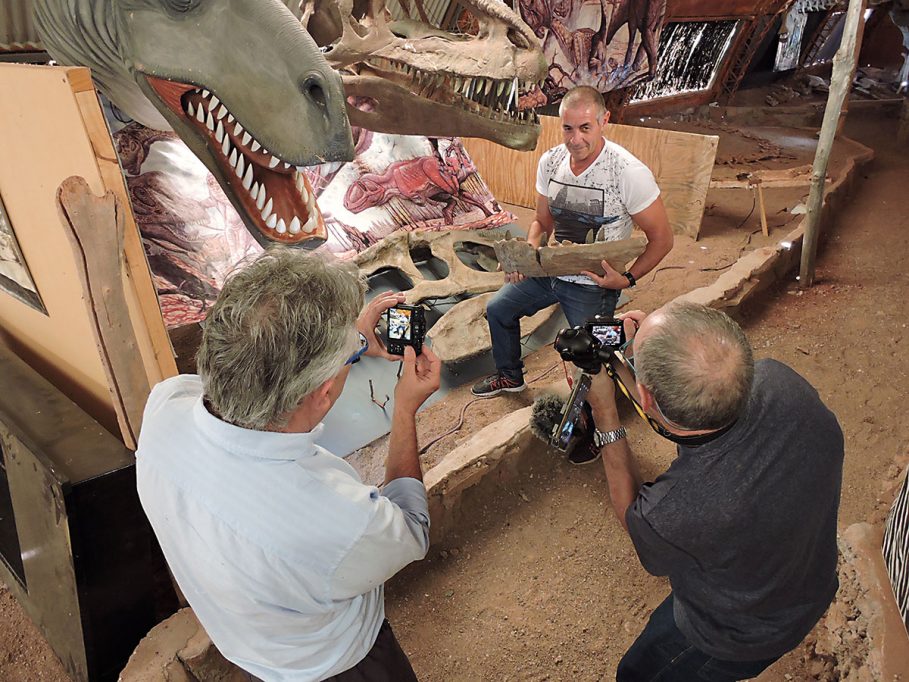
Figure 7. Jorge O. Calvo at the Barreales lake during the filming of the documentary Gigantes del fin del mundo (‘Giants at the end of the world’) in November 2018. The Argentinian palaeontologist, author of one of the articles in this monograph, passed away in early 2023, during the editing of this monograph./ Photo: Proyecto Dino Park
While the prominence of North American, British, or Chinese researchers in the world’s dinosaur literature is well known, this monograph compiles the advances in these fields made by Spanish-speaking researchers. These discoveries are not merely anecdotal; from their countries, these researchers are making first-rate international contributions that are not always sufficiently appreciated by the scientific journal industry, which tends to favour the English language and Chinese scientific expansion. One of those Argentinian dinosaur researchers who did enjoy international recognition and was invited to collaborate on this monograph for Metode Science Studies Journal, Jorge Orlando Calvo, passed away unexpectedly at the beginning of 2023. Jorge was a professor at the National University of Comahue/National University of La Palma (Neuquén), but above all he was the enthusiastic founder and promoter of the Lago Barreales Palaeontological Centre (Dino Park Project) in Patagonia, Argentina, where he worked as an explorer, researcher, educator, and wonderful host to all visitors (Figure 7). After his loss during the process of editing his manuscript, he deserves a heartfelt tribute from those of us who were privileged to enjoy his warmth and teaching, in his native Argentina or through other personal encounters. He also deserves recognition from those who will contribute to the progress of palaeontology in the future thanks to his scientific legacy.


